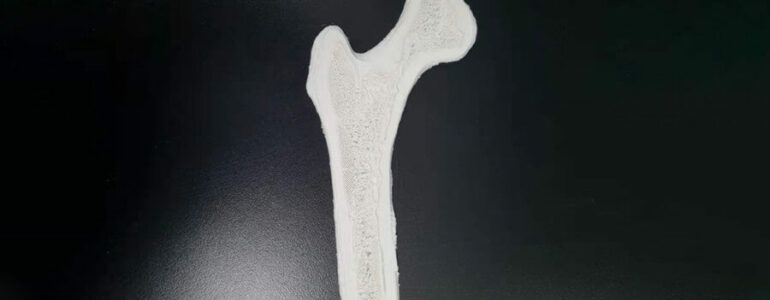8/04/22

The Korea Institute of Radiological & Medical Sciences uses a Pro2 Plus dual-extruder professional 3D printer in its laboratory. The team, led by Dr. Jonah Choi, makes use of the Pro2 Plus to manufacture multiple aids for radiation treatment.
Traditionally fabricated boluses, materials, and technology do not properly fit the patient’s anatomy, resulting in air gaps between the patient and the bolus. These air gaps can reduce of the amount of the radiation absorbed by the patient skin, ultimately reducing the therapy plan’s effectiveness.
The Korea Institute of Radiological & Medical Sciences has implemented an application produce a 3D-printed radiation bolus customized to each patient’s anatomy and geometry, resulting in a tight fit between the skin and the bolus, with no air gap between them.
In addition, the lab can print out a replica of the patient’s body part as a treatment planning model. This ability to 3D-print any shape allows the team to create a planning model with a hole-in model to directly treat the interior area. By contrast, regular experimental tools often cannot produce a part in the needed shape. In these cases, Jonah’s team can create and apply designed prototypes quickly and very conveniently.
Dr. Jonah relies on the stable and accurate output of the Pro2 Plus to print large boluses and visual models for precise treatment, in addition to an improved wearing experience of patients. The 60cm-high build volume of the Pro2 Plus can deliver these parts in one piece and saves Jonah’s team a lot of time that would otherwise be used on assembly work.
Dr. Jonah’s team is researching the effect of radiation on experimental material, in order to ascertain if they can be used to produce radiation masks. However, these materials are expensive to buy and hard to process. Dr. Jonah decided to simulate them by 3D-printing material with the same basic density or mass. The printed sample will be CT-scanned to illustrate its electron density and uniformity. Raise3D Pro2 Plus’ high heating temperature ensures the team can print these items using a wide range of materials.
Raise3D’s slicing software, ideaMaker, enables the Pro2 Plus to deliver experimental tools that can simulate many high levels of detail and accuracy. For example, with the option to lock on a partial model, ideaMaker allows users to define infill rate or density in the desired direction of the experimental object for 3D-printing.
Dr. Jonah Choi’s team is a classic example among radiation medical applications. They have also found even more value in 3D printing due to some material’s expandability. Their next move is to print flexible and metal materials to use in experiments where the items need to expand. Raise3D printer’s material compatibility, including material from the Open Filament Program, will be crucial in supporting their progress.